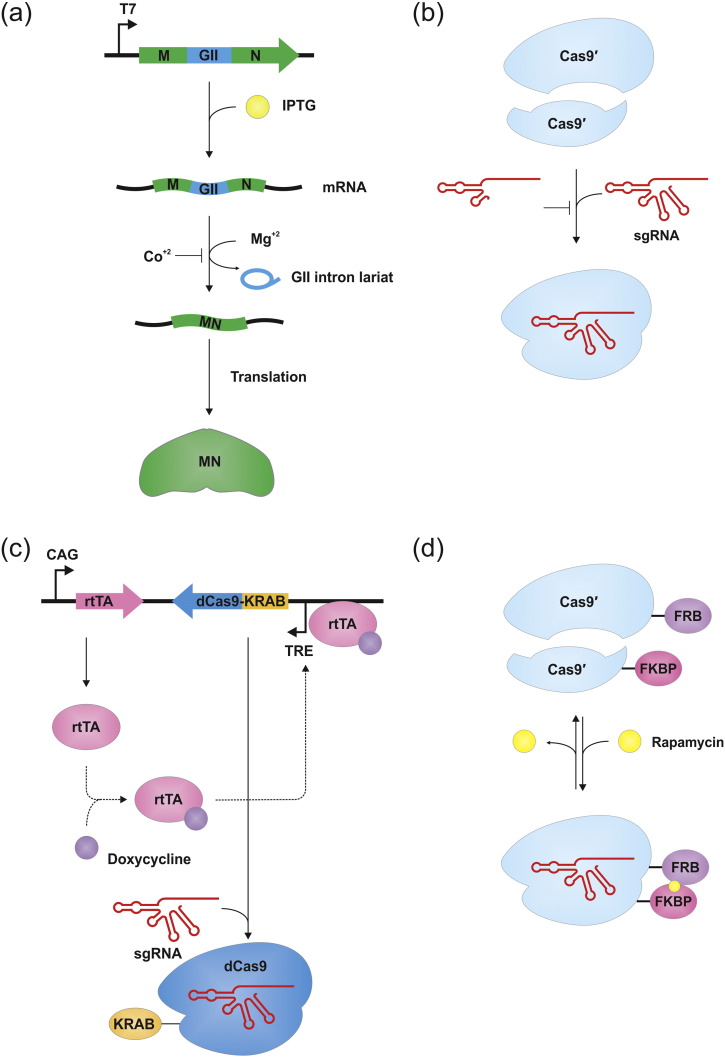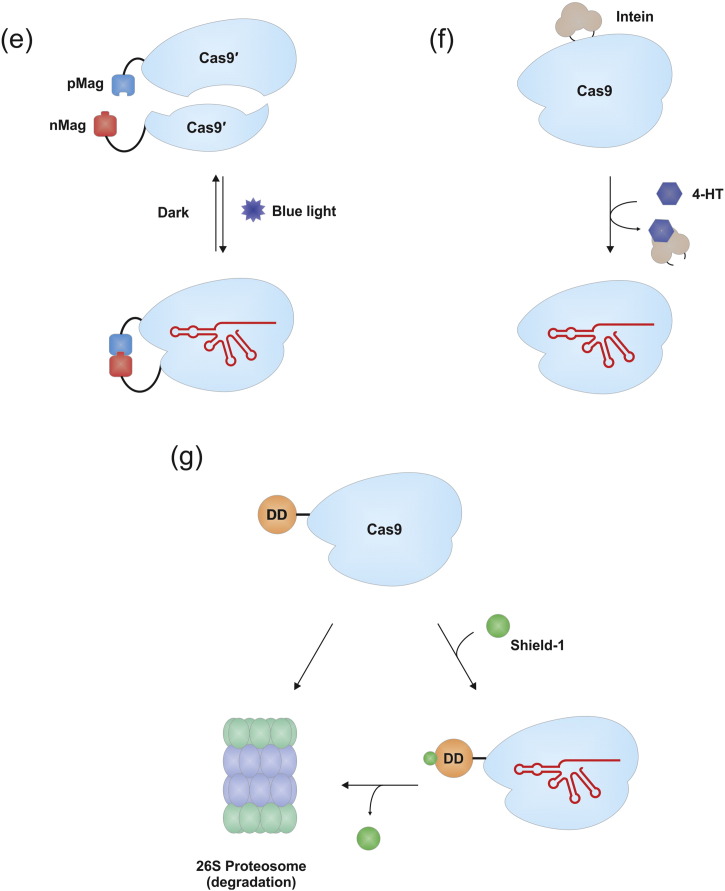Fig. 2.
Strategies used to modulate Cas9 activity. (a) Group II intron (GII)-based switch, (b) separating Cas9 into two peptides, termed split-Cas9, (c) Tetracycline-inducible and reversible expression system, and (d) ligand-dependent dimerization of split-Cas9. Note: the strategy illustrated in (a) is based on the original study conducted by Guha and Hausner [185] on modulating expression of a meganuclease, not Cas9. A similar case is observed in (c), where Mandegar et al. [141] modulated the expression of dCas9, not Cas9. In both cases, a similar approach might also be possible with Cas9.
(e) Light-dependent dimerization of split-Cas9, termed photoactivatable Cas9 (paCas9), (f) intein-Cas9, which are activated by splicing of a ligand-dependent intein, (g) and unstable destabilizing domain-Cas9 (DD-Cas9) fusions, which are degraded unless provided with the ligand, Shield1.
Abbreviations: CAG = cytomegalovirus early enhancer/chicken β-actin promoter; Cas9 = clustered regularly interspaced short palindromic repeat (CRISPR)-associated protein 9; Cas9′ = partial Cas9; dCas9 = dead Cas9; FKBP = FK506 binding protein; FRB = FKBP-rapamycin binding; IPTG = isopropyl β-D-1-thiogalactopyranoside; KRAB = Krüppel-associated box; MN = meganuclease; mRNA = messenger RNA; rtTA = reverse tetracycline-controlled transcriptional activator; sgRNA = single-guide RNA; TRE = tetracycline response element; T7 = T7 RNA polymerase promoter; 4-HT = 4-hydroxytamoxifen; DD = destabilizing domain; nMag = negative Magnet; pMag = positive Magnet; sgRNA = single-guide ribonucleic acid. See text for more details.


